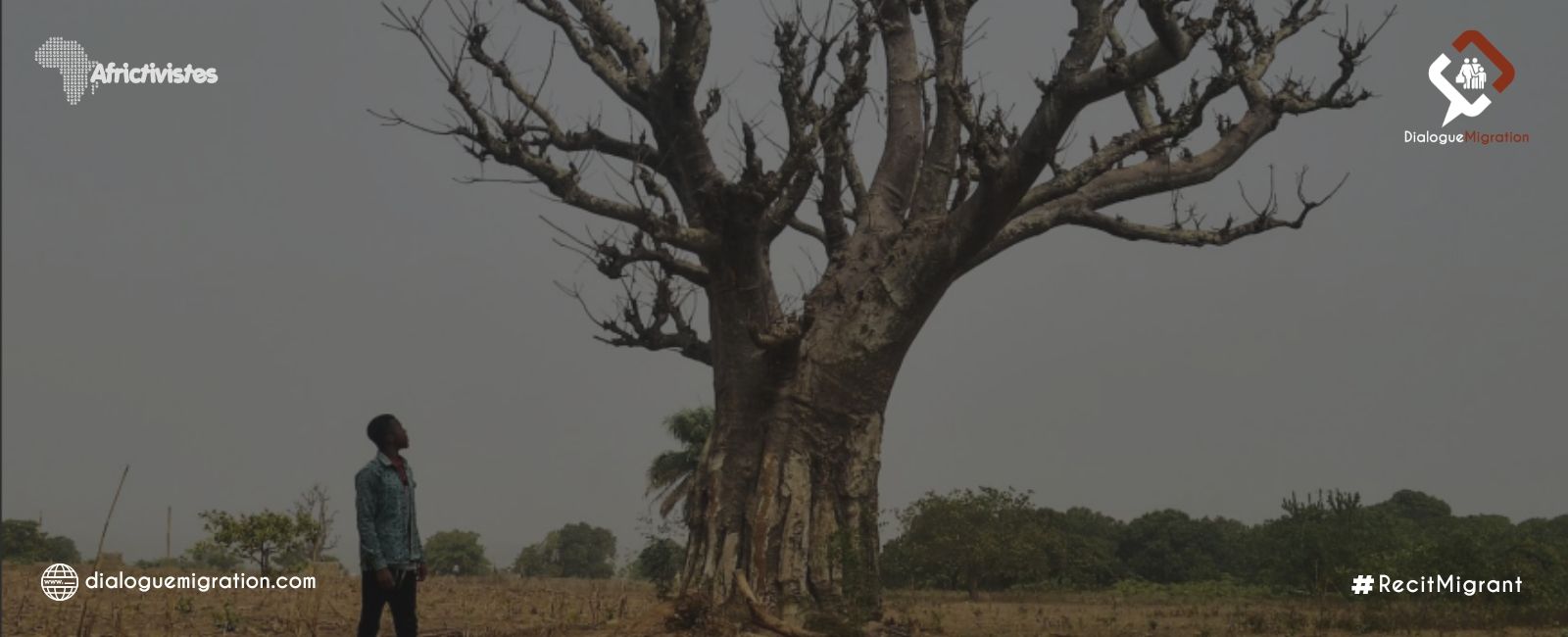

In the Sahel, climate change is negatively affecting people’s lives. Individuals and communities in this part of the African continent are affected by land degradation and declining agricultural production, with increasingly frequent floods. These disastrous effects of climate change affect the health, safety and well-being of people forced to migrate, often in unforeseen and precarious situations.
“Rising temperatures and extreme weather in the Sahel are exacerbating armed conflicts, which are already destroying livelihoods, disrupting food security and causing displacement,” said Andrew Harper, Special Adviser on Climate Action at the United Nations High Commissioner for Refugees (UNHCR).
“In the end, it will force more people to flee their homes”
According to a report by the Office of the UN Special Coordinator for Development in the Sahel and the Office of the United Nations High Commissioner for Refugees (UNHCR), if nothing is done, the climate emergency will further endanger Sahelian communities.
“Climate change in the Sahel is magnifying the effects of existing vulnerabilities, including food insecurity and political instability. Temperatures in the Sahel are rising 1.5 times faster than the global average while rainfall is erratic and wet seasons are getting shorter. Even if climate change is kept below 1.5 degrees of warming globally, the impacts on the Sahel will be dramatic,” said the United Nations’ Sahel Climate Change Report 2022.
Worse, warns the same organisation in a document dated November 16, 2022: “Even with ambitious climate change mitigation policies, temperatures in the Sahel are expected to rise by 2.5°C by 2080. If urgent action is further delayed, they could rise by 4.3°C.” And in such a scenario, the UN warns, devastating floods, droughts and heatwaves will decimate access to water, food and livelihoods, and amplify the risk of conflict. “Ultimately, this will force more people to flee their homes,” the United Nations said.
While the Sahelian traditionally migrates to adapt to seasonal patterns, rainfall variability and periodic droughts increasingly lead it to long-term or even permanent migrations. This climate change is hardening living conditions in the region, forcing people to leave their regions and countries of origin. “For example, in response to the extremely seasonal and unimodal distribution of rainfall typical of the Sahel region, subsistence farmers migrate to cities and work on roadsides, looking for alternative sources of income during the off-season. In addition, longer dry seasons increase pressure on water and pastures, leading to the migration of pastoralists off traditional routes used for seasonal migration with grazing animals (transhumance),” the Report said.
By 2050, 86 million people driven away by climatein Sub-Saharan Africa
Climate variability, in particular multi-seasonal drought in drylands, is expected to accelerate the pace of internal and cross-border migration in the Sahel region. The highest estimates predict that nearly 86 million people could be displaced in 2050 in sub-Saharan Africa due to the effects of climate change, says the UN’s 2022 report on climate change in the Sahel.
“A recent study reveals that without concrete action on climate and development, up to 32 million people in West Africa could be forced to move within their countries by 2050, in response to water scarcity, declining harvests and ecosystem productivity and rising sea levels, increased by storm surges. The same study predicts that if no action is taken by 2050, no less than 19.1 million people (about 30% of the population) could be displaced in Niger alone,” notes the hundred-page document, reviewed by Dialogue Migration.
Policies and action programmes developed to mitigate impacts
Over the past decade, the links between climate change and migration have undeniably gained visibility in action programmes, and the world’s States and decision-makers are now much more aware of the need to deal with and concern themselves with this complex subject.
In this regard, States in the Sahel region have developed and implemented policies related to climate change and migration. These policies should be reviewed with a view to integrating a human rights-based approach into both policies and their implementation. Many of the states in the region, including Niger and Nigeria, have committed to accelerating the implementation of the GCM (Ordinary and Regular Migration).
Under the Paris Agreement and other international climate action frameworks, states in the region have also prepared Nationally Determined Contributions (NDCs) and National Adaptation Programmes of Action (NAPAs) that outline states’ commitments to climate change mitigation and adaptation. States in the Sahel, including Mauritania and Niger, have integrated migration considerations into their NDCs and NAPAs, notes the UN in its 2022 Climate Report.
For people who move more or less far, within a country or abroad, for a limited time or permanently, there is the 2010 Cancun Adaptation Framework, which is the first major climate strategy document to include migration issues. It refers to the notion of displacement, migration and planned resettlement as a result of climate change, to highlight the continuum between forced and voluntary forms of migration.
In addition, the effects of climate change on immobile and “trapped” populations left behind, who cannot afford to leave degraded areas, should also be further researched and taken into account in relevant policies. People migrating to adapt to slow-onset effects may have more time at their disposal to gather the resources needed for migration, as sudden phenomena, by causing rapid depletion of resources, reduce the ability to leave, according to IOM’s 2022 State of Global Migration Report.


